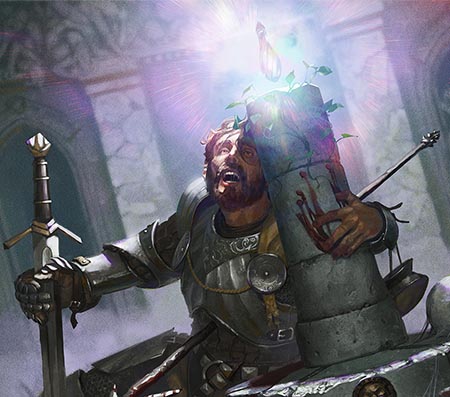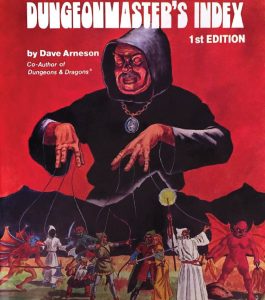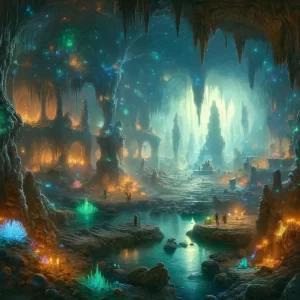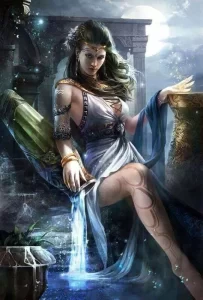
Finally flush with cash, thanks to the incidental marketing of Stranger Things and pandemic sales, the purchase by Hasbro, it has provided Wizards of the Coast, the D&D game publisher, the ability to finally fulfill a childhood RPG dream. As part of the release of One future D&D, Wizards of the Coast is launching a fully integrated virtual tabletop. This new experience will feature fully interwoven character building, environment rules engines, and tools for lazy dungeon masters - the pre-alpha looks amazing,
But these are childhood dreams. And children lack the wisdom and foresight to understand how this seemingly small development will likely negatively impact the tabletop roleplaying community for generations to come. Generations to come. Communication Philosopher, Marshal McLuhan said, "The medium is the message." In his book "Understanding Media: The Extensions of Man," McLuhan discusses how the mediums we use to express our ideas irrevocably shapes the way we interact with those ideas.
Or, in simple terms, if all you have is a hammer, everything looks like a nail. Therefore, in order to cater to the mobile-user-from-birth younger generation, it only makes sense that Wizards of the Coast would develop a vertically integrated virtual tabletop for Dungeons and Dragons. And that's even ignoring cultural shifts due to the pandemic toward virtual collaboration.
This was inevitable. Teenagers were already highly comfortable with this stuff in 2017. The issue with WotC's in-house VTT development, however, is that for the past half century, Dungeons and Dragons has been played around a table with friends and family, and largely without the concept of mobile devices or virtual tabletops existing in the D&D zeitgeist at all.
Therefore, Wizards of the Coast pivoting from a tabletop-first to a virtual-first business model, (and yes, they are absolutely doing that - the One D&D VTT wouldn't be worth the investment to shareholders as a side project) would mean younger kids, who are introduced to D&D for the first time, will see these fully integrated virtual game systems running in their browser, and will immediately be glued to the video-game-like nature of the whole ecosystem.
Obviously, virtual tabletops have existed in the past. Roll20 has been around since 2012, after all. But, never have these platforms had such direct and clear access to D&D players that the One D&D project will enjoy. New players will receive marketing flyers for the new VTT platform in every box set, book, video game, and any other D&D paraphernalia sold.
TaleSpire, or other VTT services, just simply can't compete with that. In a few years, nobody will even know what Talespire is. With all that said, however, to truly detail how this business realignment will influence the game's culture, imagine how players interacted with D&D from 1974 till today.
Players, especially while roleplaying in the theater of the mind, had no issue dropping chandeliers on the goblins, damming up a river to flood out a nearby ogre infested dungeon, or whatever creative shenanigans players can come up with. And non-theater-of-the-mind gaming is something acknowledged is an issue with physical tabletop terrain as well: miniatures and terrain limit the creativity of players at the table. But virtual tabletops? That just adds another layer of obfuscation.
Physical miniatures and terrain can be picked up and manipulated by the players at the table, even the parts of a terrain set that a virtual tabletop likely forbids, like walls, doors, or trees, or even whole buildings. These impulsive and physical manipulations of tabletop terrain can invite creative use of player spellcasting, for example. In a virtual setting, however, it only follows that players will likely succumb to the even-more-limited and constraining effects of the software itself.
If an interaction with the environment isn't easy to conduct and it isn't an obvious option, players won't even think to do it. Moreover, because the new VTT engine developed by Wizards of the Coast, already feels so much like a video game (as demonstrated by the concern-hushing statement seen in their launch video of One D&D), players will likely bring their video game playing expectations with them: expectations where environment manipulation just isn't worth the CPU cycles to program in.
People would counter-argue about Roll20, Owlbear Rodeo, or even Talespire Virtual Tabletops, which already exist, and already experience many of these problems: but these VTT systems are not the default method of experiencing D&D today and are designed by smaller development teams with limited budgets for marketing.
Furthermore, this new development also sets the standard for any other RPG system on the market that younger players might try. Integrating a D&D game into Roll20, for example, is difficult. It requires lots of setup, experience with the interface, and doesn't offer integrated DMing tools, like a random adventure generator that can be set up all within a few button clicks.
Contrast this with what is likely to happen with One D&D's virtual interface: Dungeon Masters will probably load up an entire, to scale, 3d battle map of Faerun's Sword Coast, with pre-generated random encounters and adventures, and prepopulated towns. Players who are just 10 years old today are just going to expect this stuff if they are to be convinced to try a different gaming system like Call of Cthulhu, Vampire: the Masquerade, or Shadowrun. And that leads us to our next issue: non-D&D.
It's only a matter of time before the digital sales of D&D content will be largely pulled from DM's Guild and DriveThruRPG platforms so as to be shifted to a One D&D's virtual tabletop store. And as much as indie game developers may dislike this, the jagged pill to swallow here is that DriveThruRpg does a huge service to the independent game community by simply exposing 5th edition players to these smaller, fringe RPGs. Fringe includes heavy hitters like Call of Cthulhu, World of Darkness, and Shadowrun.
When over 50% of all Roll20 campaigns are created for D&D 5e, and the next largest system, Call of Cthulhu, squeaks by at only 10% of campaigns, it really illustrates how much every other RPG ruleset struggles for any visibility at all. But when D&D 5e content is no longer available on platforms which sell content for these other games, the organic discovery of these smaller franchises will become more and more difficult to carry out.
And it's not just smaller, independent RPGs which will have their discoverability nerfed. Game writers, who use the DM's Guild content license agreement to create Faerun, Eberron, or Ravenloft content sign a contract between Wizards of the Coast and One BookShelf, the company that owns DM's Guild, to earn 50% of any published content's sales using WotC IP, while Wizards of the Coast retains rights to the created content. This might be a fine tradeoff for people who are happy to make adventures for one of D&D's campaign settings in exchange for visibility, but these creators, at the very least, are able to maintain some kind of tangible record that can persist over decades - a PDF or printed booklet - that goes a long way in the perpetual longevity and discoverability of this licensed content.
This is why you, today, can still play your favorite adventure, Janell Jaquays' Caverns of Thracia, decades after its publication. This kind of experience is the definition of Generational Gaming. However, adventures "programmed" in this virtual-first oriented One D&D system, instead of creating generation-enduring written content, will instead be wound up in a nondurable, non-migratable system filled with microtransactions. You can't make a PDF or booklet out of a programmed event tree.
One of the biggest hurdles of being a Dungeon Master is the unspoken financial expectation that dungeon masters will pay for basically everything. Dungeon Masters buy at least three times as many books, if players buy any books at all, and commonly provide the dice, miniatures, battle mats, terrain, and so on. With that said, the fact that there is only one person in a group of five players who makes the majority of the purchases isn't missed on Wizards of the Coast.
And yet again, the One D&D's new virtual game space solves this WotC marketing problem, too. If Fortnite is any indicator, players love to spend "only 99 cents" on avatar skins, special weapons, or god knows what else they can get through various microtransactions. And don't think for one second that One D&D would be any different. There will be no shortage of premium avatar poses, equipment loadouts, and even environment asset packs for dungeon masters.
D&D Beyond already has dice skin microtransactions, after all. Therefore, between these player microtransactions and dungeon master 3rd party content being tightly wound up in One D&D's platform, Wizards of the Coast will have created the "Apple Ecosystem" equivalent of Dungeons and Dragons.
Sure, you've heard a few people they'd give an Android phone a try, but between their iPhone, their iPad, their iWatch, their Airpods, their MacBook, they are as hesitant to do so as they are locked into the apple-verse. Similarly, the younger Dungeons and Dragons community will have even more reservations from abandoning not just a rule system they are comfortable playing, but all their assets purchased via microtransactions. Letting all of that stuff go just to play in their "imagination" at an actual table will be less and less appealing to the more dominant One D&D's virtual tabletop garners.
The future death of theater-of-the-mind by Dungeons & Dragons generational gaming is real...dead, unless we don't buy into their VTT. I for Juan ONE, will never. This is Sparta!







